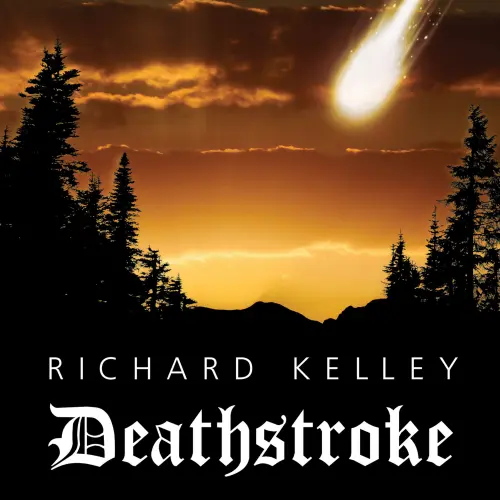Richard Kelley
Deathstroke

unabridged
20 hours 47 minutes
Some articles contain affiliate links (marked with an asterisk *). If you click on these links and purchase products, we will receive a small commission at no extra cost to you. Your support helps to keep this site running and to continue creating useful content. Thank you for your support!
After watching the movie Jaws, you stayed out of the water. After reading Deathstroke, you'll stay out of the forest.
"Hurry! It's coming!" A desperate young mother shoves her infant son deep into a crevice between two logs. Will her baby survive? Will anyone? "Hurry! It's coming!"
That scene, and the hundreds of others like it, are everything Algar Kersek could have hoped for. The alien general has traveled deep into the Sonora desert to be present for the recording of the memories of a dying human. Dr. John Richardson is the last surviving witness to the horrors of a Prosian Deathstroke. His memories of the event will be captured on a crystal, there to be copied and distributed to every corner of the Empire. It is the most eagerly awaited crystal in history. The sights, the sounds, even the sense of touch will soon be available for every Prosian to experience for himself. For the first time, everyone will know what it was like to face the Gorgoth, the ultimate weapon of mass destruction.
As the recorder's probe burrows deep into Richardson's mind, the terrifying flow of his memories shows how an unsuspecting world was plunged into a desperate struggle for survival. In that struggle, the very soul of humanity is laid bare. Deathstroke is a chronicle of humanity's darkest hour. So, too, is it the story of mankind's finest.
But above all, Deathstroke is a warning. It is an allegory of an approaching world brought on by an exploding population utterly addicted to carbon: storms of unprecedented violence, lethal viruses, and most of all, a species that devours everything in its path. Do we not see the coming reality? Will we act in time? Deathstroke can be our call to action, or it can be our epitaph.
"Hurry! It's coming!" A desperate young mother shoves her infant son deep into a crevice between two logs. Will her baby survive? Will anyone? "Hurry! It's coming!"
That scene, and the hundreds of others like it, are everything Algar Kersek could have hoped for. The alien general has traveled deep into the Sonora desert to be present for the recording of the memories of a dying human. Dr. John Richardson is the last surviving witness to the horrors of a Prosian Deathstroke. His memories of the event will be captured on a crystal, there to be copied and distributed to every corner of the Empire. It is the most eagerly awaited crystal in history. The sights, the sounds, even the sense of touch will soon be available for every Prosian to experience for himself. For the first time, everyone will know what it was like to face the Gorgoth, the ultimate weapon of mass destruction.
As the recorder's probe burrows deep into Richardson's mind, the terrifying flow of his memories shows how an unsuspecting world was plunged into a desperate struggle for survival. In that struggle, the very soul of humanity is laid bare. Deathstroke is a chronicle of humanity's darkest hour. So, too, is it the story of mankind's finest.
But above all, Deathstroke is a warning. It is an allegory of an approaching world brought on by an exploding population utterly addicted to carbon: storms of unprecedented violence, lethal viruses, and most of all, a species that devours everything in its path. Do we not see the coming reality? Will we act in time? Deathstroke can be our call to action, or it can be our epitaph.
Lismio